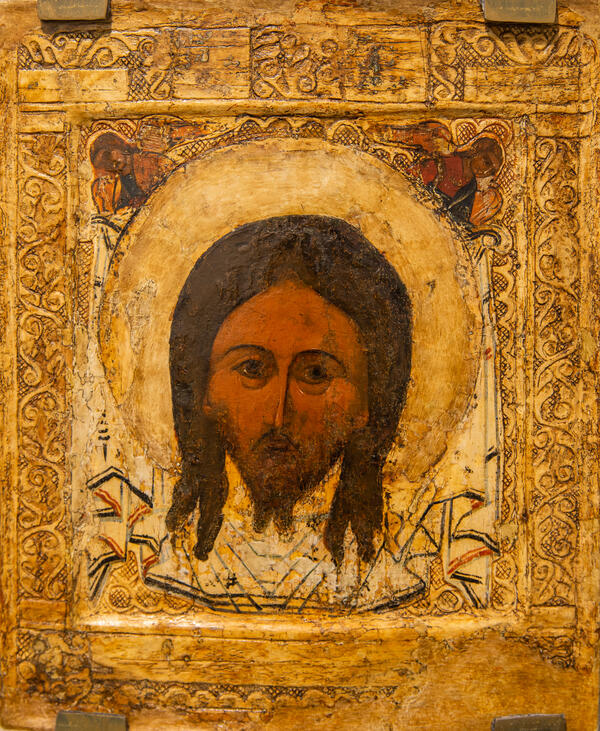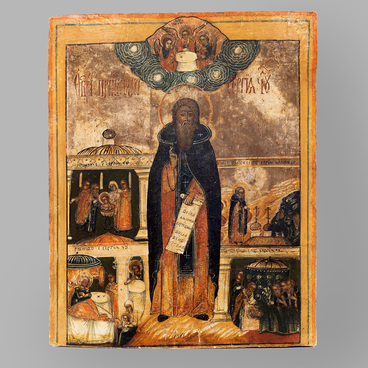The Mandylion icon was donated to the Murmansk Regional Art Museum as part of a collection of 52 icons that had been taken out in a state of disrepair from the crumbling building of a closed church in the village of Kovda. The village is located at the mouth of the eponymous river, which flows into the Kandalaksha Bay of the White Sea. For a long time it was a large and important trading port, known both in the north of Russia and in Scandinavia. Kovda belonged to the lands owned by the Solovetsky Monastery, and, presumably, the iconostasis of the temple was painted in the same style by masters coming from the monastery. The church that was built at the beginning of the 18th century was consecrated in honor of Saint Nicholas, whose image was extremely popular in the North.
The Mandylion icon from the museum’s collection is a traditional image of the imprint that Christ’s face had left on a piece of cloth — a kind of a towel. This image is revered by the Orthodox church as the first depiction of Jesus Christ. As the name suggests, this image was not created by an artist and no familiar materials were used. Legend has it that Augar V, the king of Edessa who suffered from an incurable disease, sent an artist to portray Christ. The artist failed. Then Christ washed his face, dried it with a towel. An imprint of Christ’s face appeared on the fabric, and Jesus handed the towel over to the artist. Thus, according to legend, the Mandylion became the first icon. The image, which was miraculously imprinted on the canvas, was sent to King Augar with the Apostle Thaddeus, who healed the king when the latter touched the miracle-working image. The icon is distinguished by a light beige color of the background and margins with an emphasis on the draperies of the Mandylion, held by angels, and on the Savior’s face.
The icon is decorated with a rich, three-dimensional pattern around the perimeter, and the technique of levkas carving is used — in icon painting, this is the name of the gesso, most often made from chalk mixed with animal or fish glue and linseed oil. The gesso is applied on a specially prepared icon board in several thin even layers. After drying, it is polished, and then the painting can start.
The Mandylion icon from the museum’s collection is a traditional image of the imprint that Christ’s face had left on a piece of cloth — a kind of a towel. This image is revered by the Orthodox church as the first depiction of Jesus Christ. As the name suggests, this image was not created by an artist and no familiar materials were used. Legend has it that Augar V, the king of Edessa who suffered from an incurable disease, sent an artist to portray Christ. The artist failed. Then Christ washed his face, dried it with a towel. An imprint of Christ’s face appeared on the fabric, and Jesus handed the towel over to the artist. Thus, according to legend, the Mandylion became the first icon. The image, which was miraculously imprinted on the canvas, was sent to King Augar with the Apostle Thaddeus, who healed the king when the latter touched the miracle-working image. The icon is distinguished by a light beige color of the background and margins with an emphasis on the draperies of the Mandylion, held by angels, and on the Savior’s face.
The icon is decorated with a rich, three-dimensional pattern around the perimeter, and the technique of levkas carving is used — in icon painting, this is the name of the gesso, most often made from chalk mixed with animal or fish glue and linseed oil. The gesso is applied on a specially prepared icon board in several thin even layers. After drying, it is polished, and then the painting can start.



